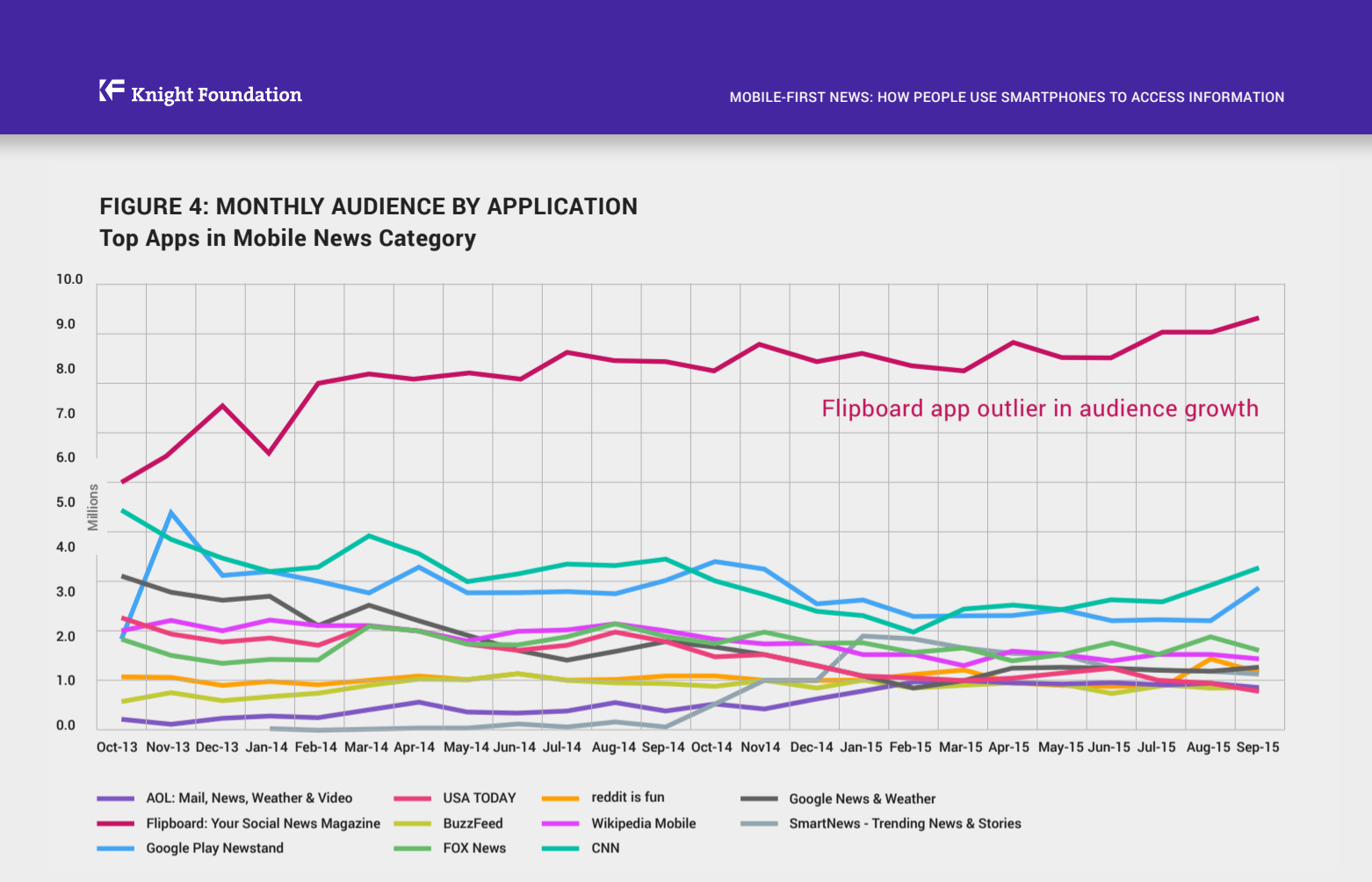Social media and apps are a major destination for a large audience of mobile news consumers that may be nearing a saturation point, according to a report released Wednesday morning by The Knight Foundation.
The report, commissioned from Nielsen by Knight, includes findings from 9,000 panelists who used meters to monitor their app usage. No surprise: The report reflects the consensus that audiences are getting much of their news on mobile devices. Nearly nine out of every 10 Americans (144 million users) now access news and information on smartphones and other mobile devices, up about nine percent from the previous year.
But that growth is slowing, according to the report, suggesting a plateau might be near. The growth of mobile apps, in particular, has slowed, with adoption rates mostly flat across the industry (with the exception of Flipboard).

(Screenshot)
The stagnation of growth among news apps has come as users are spending an increasing amount of time on social media, according to the report. Mobile news seekers spend an average of 5 percent of their time on news every month. But 27 percent of their time is spent on social networking sites like Facebook and Twitter. Nearly two-thirds of Facebook’s users (70 percent) use Facebook for news every day.
Some other findings from the report:
- Mobile app users are a small but dedicated audience. “Mobile users who access news through apps spend more time reading the content, but the overall audience for apps is small, so it’s essential to know who those users are.”
- Television still reigns supreme. “Social media sites and apps are important sources of news for social media users, although television remains their top source.”
- People who read about news on social media often talk about it in person. “Mobile news users active on social networks do not just passively engage with news content but take offline action related to the content.”
This move toward social media consumption has been met by experimentation from larger news outlets looking to capitalize on the shift. But their counterparts in smaller markets have been slower to adapt, according to the report.
While news organizations with national (or international) reach are experimenting with active on mobile and social media platforms, many local and regional outlets have been slower to migrate toward the capabilities needed to become “digital-first” operations — meaning their workflow (and the content they develop) prioritizes production for mobile and online platforms over print.
You can read the full report here.






